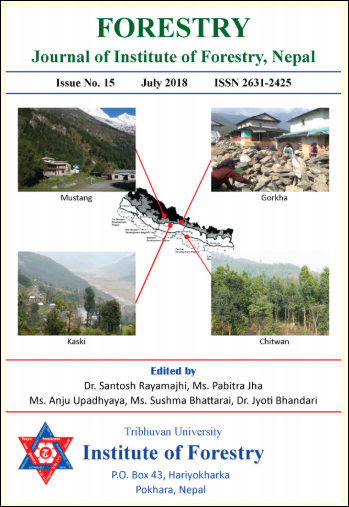Effect of Water Stress in Soil Nitrogen Dynamics under Intercropping System with Maize and Sorghum
DOI:
https://doi.org/10.3126/forestry.v15i0.24916Keywords:
drought stress, intercropping, aggregate fractions, 15N, plant biomassAbstract
Global warming, one of the most persistent threats to nature, is expected to result in severe droughts in many parts of the world. Droughts are supposed to effect individual plants and/or plant communities by changing their a/ biotic interactions. The objective of this study was to elucidate drought effects on soil nitrogen allocation in different aggregate sizes. This was done by growing Zea mays and Sorghum bicolor in monoculture and mixture. Nitrogen allocation under drought stress was traced using nitrogen stable isotope 15N. Drought disintegrated soil aggregates into finer aggregates for sorghum monoculture and decreased the aggregate proportion in small macro-aggregate fraction for maize monoculture. For plant mixture, drought increased total nitrogen content in micro-aggregate fraction and uptake of added 15N in bulk soil. Hence, the study showed that mix planting maize and sorghum offer better resistance against changes in plant biomass and nitrogen content which suggests its effectiveness in nitrogen conservation during water stress. Moreover, intergrowing maize and sorghum under agroforestry systems also produce advantageous results.
Downloads
Downloads
Published
How to Cite
Issue
Section
License
© Tribhuvan University, Institute of Forestry




